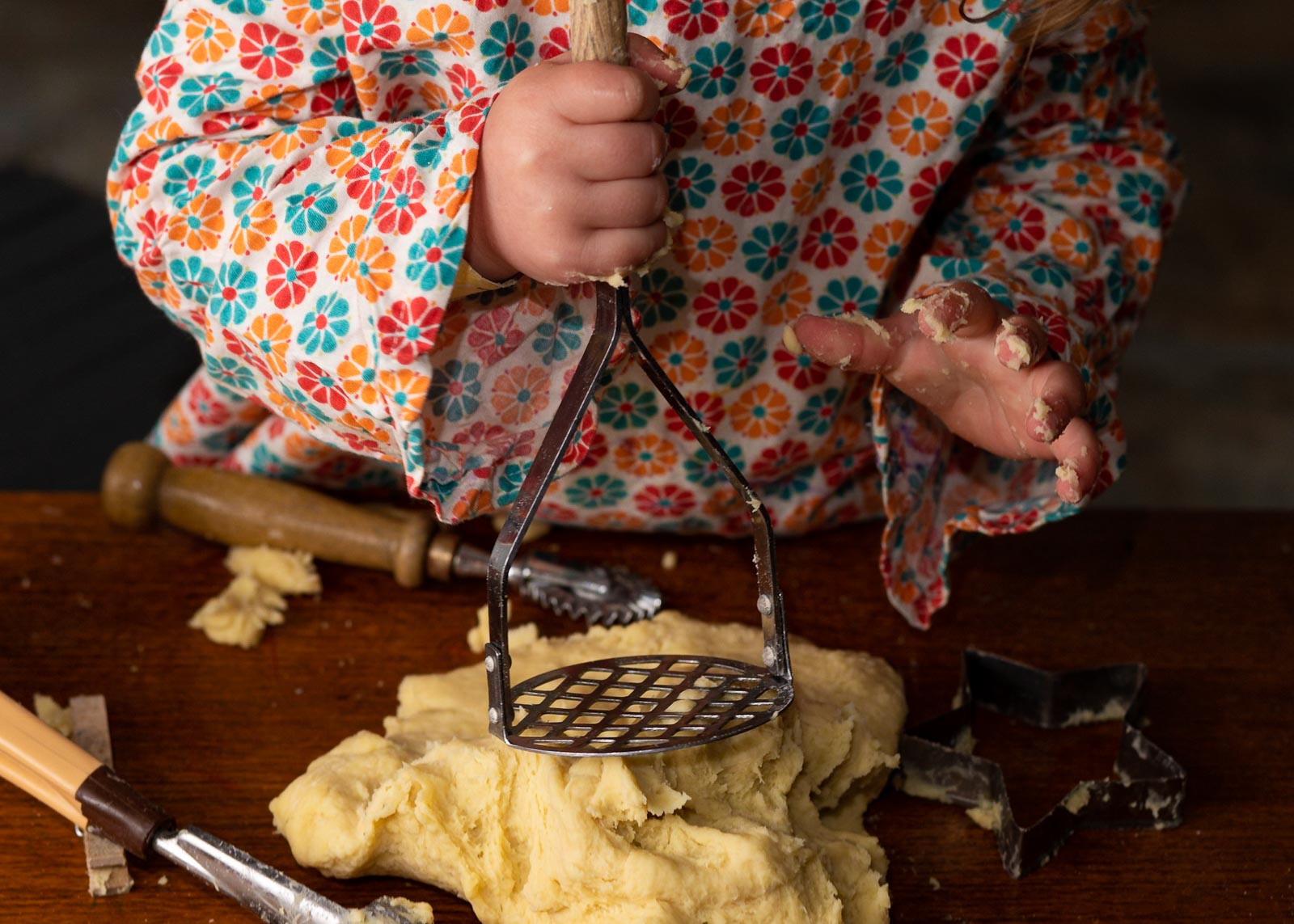
Playdough is a classic learning activity in early childhood education. Some children love playdough and can spend hours experimenting at a playdough table. This page will help early childhood educators provide a wider range of experiences with dough.
EYLF learning outcomes
The Early Years Learning Framework encourages children to connect with open-ended materials like playdough (4.4), for curiosity, imagination, creativity (4.1), problem solving, inquiry, experimentation, hypothesising, researching and investigating (4.2).
Playdough is excellent for fine motor development and strengthening the hand muscles required for handwriting. The EYLF asks children to take increasing responsibility for their own physical wellbeing (3.2).
A classic playdough recipe
Creme of tartar is a key ingredient in homemade playdough. A popular playdough recipe in Australia is printed on containers of McKenzie's Cream of Tartar. It turns out smooth and silky. They have also published this playdough recipe on their website.
Playdough as a sensory experience
Add sensory ingredients
Add these ingredients to any basic playdough recipe to alter its texture and smell:
Confetti, cornflour, flower petals, food dye, glitter, herbs, legumes, oats, potpourri, rock salt, sand, shampoo/conditioner, shredded coconut, shredded paper, spices, tea leaves, tempura paint, rice, vanilla.
The Curiosity Approach writes: “When florists make floral tributes and bouquets they discard lots of stems, leaves and petals. Just ask them to fill a bag ready for children to use within children’s playdough.” This is an excellent way to acquire free resources while connecting with people in your community.
Use sensory language
Educators can build children's vocabulary and sensory awareness by describing the qualities of the dough:
Bumpy, cold, colourful, damp, elastic, floppy, fragrant, glossy, grainy, gritty, goopy, heavy, hot, lumpy, light, moldable, scented, scratchy, smelly, silky, slimy, smooth, soft, squishy, stretchy, sticky, sweet, textured, warm, wet.
Ways to manipulate playdough
Early childhood educators can sit alongside children at a playdough table and demonstrate new ways to manipulate the dough. Expand children's vocabulary by describing your actions:
Blend, build, carve, combine, cut, decorate, flatten, fold, imprint, knead, mould, pat, pinch, press, pull, push, roll, sculpt, slice, smash, stretch, twist, weave.
Objects and tools to use with playdough
- Toy animals and cars which can make footprints and tracks.
- Beads, buttons, jar lids, pebbles, gum nuts, shells and bottle caps for decorating and imprinting shapes.
- Building blocks to provoke creativity.
- Hair combs, lace and mesh/netting for imprinting textures.
- Straws, toothpicks, feathers, twigs, pipe cleaners and pop sticks. These make great birthday candles.
- Kitchen tools like measuring cups, rolling pins, cookie cutters, cutlery, scales, and pasta-making equipment. Children can role play making food.
Playdough learning experiences
Combine colours
Combine two different colours of playdough to make a new colour. This teaches children how primary colours blend to form secondary colours and introduces colour theory in a hands-on way.
Reenact a story
Children can work as a group to recreate a scene from a storybook. Playdough is a very flexible material and can be easily moulded into various characters and objects. You can also add loose parts to your scene, like fabric, cardboard, beads and sticks.
Conduct an experiment
Ask children to make sculptures from playdough. Place half the sculptures in the shade and the other half under hot sun. Encourage children to hypothesise by asking what they think will happen. Check and discuss the results later in the day.
Watch videos
Educators can watch videos of playdough sculpting with their children, while discussing the techniques used. Try this colourful rainbow (by Mallu in UAE) or a bouquet of roses (by Hi Origami).
Remember, this isn't a “craft activity”, but an investigation of materials. Children may interpret videos and gain inspiration in different ways.
Use alternative doughs
Extend a child's interest in playdough by changing the material. Provide them with an alternative dough like clay or polymer clay. Bake yummy treats from bread dough or cookie dough. Similar materials include magic sand, goop and slime.
Make playdough animations
Stop-motion animation with playdough involves creating characters by moulding the dough, then photographing them frame by frame as they're subtly adjusted. After capturing enough frames, the images are edited together to create the illusion of movement. Try a simple stop-motion app to guide you through the process.
Learning environments
Play on the floor
Listen to the Children shared photos on Facebook about using playdough on the floor:
“Look at their CORE, their shoulders, their backs...Gravity is affecting their body dynamics in a whole different way…
“Look at the various body parts being used that don't typically get used while sitting at the table. See the forearms rolling the ‘rolling pin’?”
How could you replicate this in your own play space? Try other unconventional locations:
- Add playdough to the home corner to use as pretend food.
- Place dough on a mat under a tree. Can children press it against the tree bark to make imprints?
- Place old, dry dough in the water trough. What happens to it?
Observations and learning stories
When writing observations about playdough, consider how the child is manipulating or interacting with the dough. Describe what the child is actually doing.
Next, observe secondary actions and social interactions. Is the child speaking to someone else while they play? Write their words exactly as they were spoken. Non-verbal communication may include passing a piece of dough to a friend, or copying what another child is doing with their playdough.
Learning stories about playdough may include events that occur before and after the activity. Why did the child choose to approach the activity? Maybe they observed something special like the colour or scent. How long did they stay engaged and what caused them to leave?
List any developmental milestones or learning outcomes they demonstrated while playing with the dough, like fine motor abilities. And look for potential follow-up experiences by considering their strengths, needs and interests.
